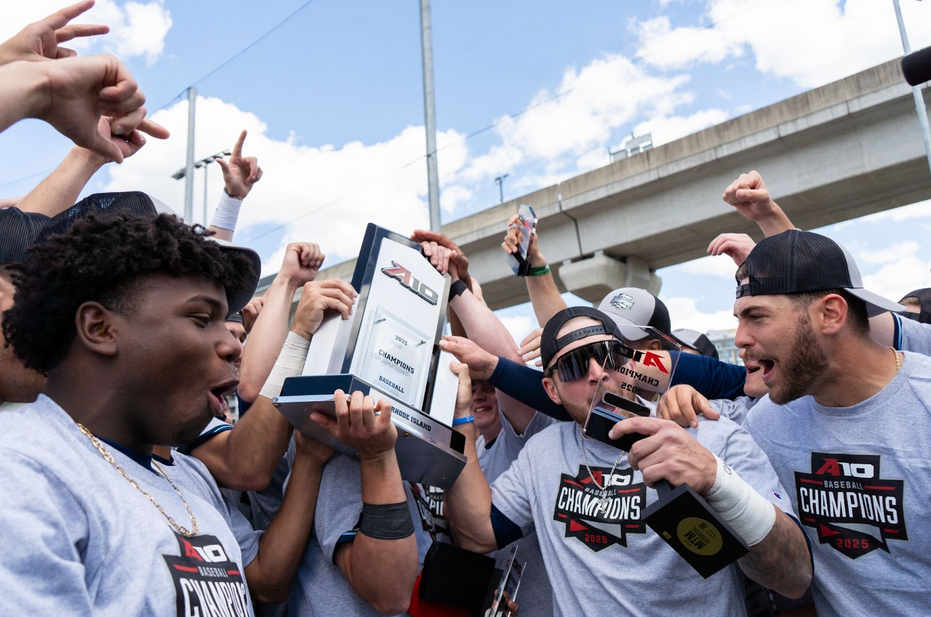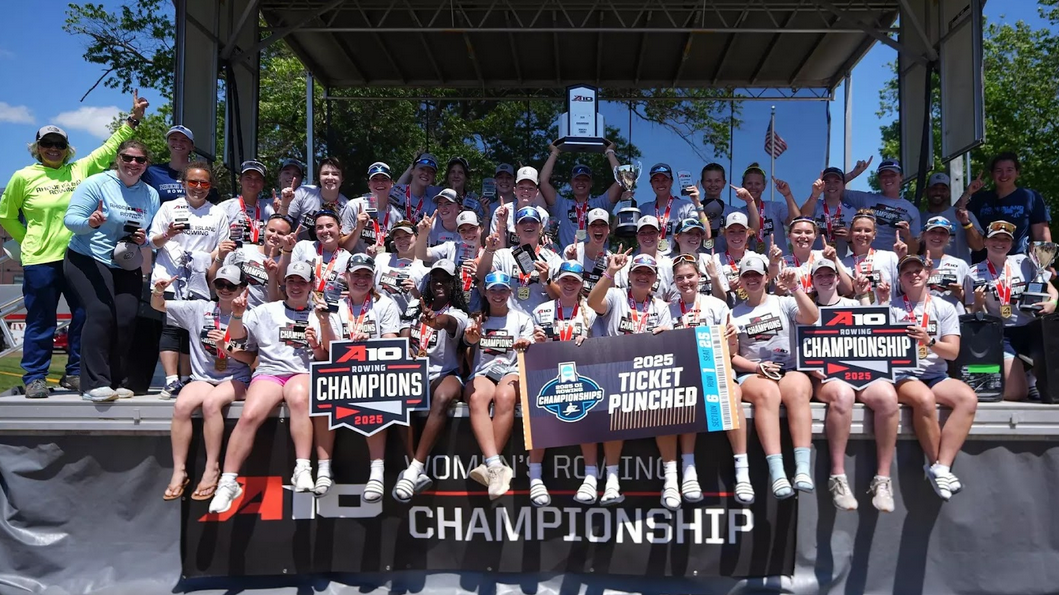In the midst of the COVID-19 pandemic, the University of Rhode Island athletic department has established protocols to allow its student-athletes to practice and play in a safe and responsible manner.
Andy Llaguno, the associate athletic director for health and performance and the chair of the University of Rhode Island COVID-19 athletic action team, has been leading efforts to ensure these safety protocols.
According to Llaguno, the athletic department worked throughout the spring and summer to implement an extensive COVID-19 response plan. The plan, called the URI Athletics COVID-19 Action Plan, outlines the school’s guidelines to limit the spread of COVID-19 and safely return to athletic competition. The plan is based on evolving research and guidelines from the Center for Disease Control (CDC), NCAA, the Intercollegiate Council for Sports Medicine (ICSM), Rhode Island Department of Health (RIDOH), Atlantic 10, Colonial Athletic Association (CAA) and the university.
Following recommendations from the NCAA, Llaguno said the athletic department implemented a surveillance testing system that would separate all student-athletes and staff into two groups: an inner bubble and an outer bubble. The inner bubble includes student-athletes, coaches, managers, athletic trainers, strength coaches, sports information directors and academic advisors. The outer bubble includes sports administrators, equipment staff and other non-essential team personnel. The tests would be administered by athletic trainers with the help of URI Health Services.
Along with the general student population, all student-athletes living on campus were tested for COVID-19 upon their arrival to the university. According to Llaguno, only one student-athlete tested positive, but the individual has since recovered.
During the week of Sept. 14, over 600 COVID-19 tests were administered to all student-athletes, whether they live on-or off-campus, and to all other members of the inner and outer bubble. All tests came back negative. After initial testing, 25-50 percent of all inner-bubble members will be tested every two weeks starting this past Monday.
The athletic department is constantly adjusting this plan to accommodate for the growing trend of off-campus URI students testing positive for COVID-19. Llaguno said that the athletic department wants to add more student-athletes who live off-campus to the first round of surveillance testing.
If a student-athlete living on-campus tests positive, the current regulations by the committee say the person must isolate for 10 days, starting from the day they began to have symptoms or the date of their positive test if they are asymptomatic. Anyone that they have come in close contact with would also be required to quarantine for 14 days.
According to the protocols currently in place, the student-athlete wouldn’t be allowed to leave isolation until the following three requirements are met: 10 days have passed, 24 hours have passed with no fever without using fever reducing medication and symptoms have improved. URI Health Services would also be left to determine whether a student-athlete can end isolation. Should a student-athlete who lives off-campus test positive, the individual would be placed at a designated isolation area and anyone else living in the house must also quarantine for 14 days.
“It’s inevitable that we are going to have positive tests, just like the University has,” Llaguno said. “We are planning for it, but we are hoping it doesn’t happen though.”
Teams returned to practice last week with new procedures. Instead of practicing as a team, student-athletes were required to practice in groups of five to maintain social distancing along with wearing masks during light aerobic activity. They also have to pass the University’s daily health assessment app everyday they go to campus. Llaguno hopes to increase the size of functional groups depending on this week’s round of test results.
“Every two weeks, if we are doing well, then we’ll increase the functional groups of five to maybe double [so] a whole team can practice,” he said.
The school is also prepared for the reality of any potential outbreaks among the athletic or university community. Llaguno said that among the reasons why athletic activities would be paused are for an inability to isolate new positive cases or quarantine high contact cases on campus and for an inability to perform symptomatic, surveillance, or pre-competition testing when warranted. He also said campus or community-wide testing rates that are believed to be unsafe, an inability to perform adequate contact tracing consistent with government requirements and local officials deeming hospital infrastructure would be unable to accomodate the surge in cases as reasons that could lead to a pause.
He reiterated the importance of abiding by the necessary precautions to ensure that the university community stays safe.
“The most important thing is the messaging that goes out to students,” said Llaguno. “They need to follow the rules because chances are they are going to be fine, but the majority of faculty on campus are 60 years old or over.”



